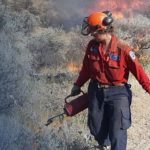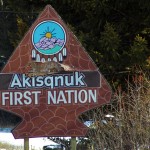Home »

Protect your home from wildfire
They are called grass fires, forest fires, wildland fires, or by a variety of names. Yet, no matter the name, they pose an evolving threat to lives and property in an increasing number of communities across Canada and the U.S.
Homes near natural areas, the wildland/urban interface (WUI), are beautiful places to live. These pristine environments add to the quality of life of residents and are valued by community leaders seeking to develop new areas of opportunity and local tax revenue, but these areas are not without risk.
Fires are a part of the natural ecology, living adjacent to the wilderness means living with a constant threat of fires. Fire, by nature, is an unpredictable and often uncontrollable force. Recent fires, like those seen in Slave Lake in 2011 and the interior of British Columbia in 2003, serve as a reminder to the fire service, emergency managers, local decision makers, and the public of the need to better understand the environment we live in and the positive role each group can collaboratively play in a wildland fire solution.
The concept of fire-adapted communities (FACs) holds that, with proper community-wide preparation, human populations and infrastructure can withstand the devastating effects of a wildland fire, reducing loss of life and property. This goal depends on strong and collaborative partnerships between agencies and the public at the provincial and local levels, with each accepting responsibility for their part.
“Many people move to the wildland urban interface, bringing with them the same fire protection expectations they had when living in urban or other suburban communities,” says Wayne Price, Director of Cranbrook Fire & Emergency Services. “The responsibility of the public is to understand and prepare for the risk of wildland fire. Homes that do not reflect the risk pose not only a threat to the residents themselves, but neighboring homes and emergency services as well.”
FACs support an environment where individuals have access to information and necessary knowledge concerning protection of their life, property, and the community. When considering FACs, the public should address:
• Building relationships with local public safety agencies and residents before a fire starts;
• What to expect from local emergency responders in the first 24 hours of a fire;
• Understanding of the Home Ignition Zone and Defensible Space; • how to create and maintain a fuel-free area;
• Vegetation along fences and fences made of flammable materials attached to homes;
• Proper landscaping and plant selection;
• What the environmental FAC was before local development;
• Placement of radiant heat sources near the home (i.e., wood piles, fuel tanks, sheds);
• Thinning trees and ladder fuels around the home;
• Debris under decking and patios;
• Understanding the ember danger;
• Having a situational awareness when fire warnings are called;
• Having a personal and family preparedness plan; and
• Understanding what evacuation means to you and your community.
“There are various public education tools focusing on wildland fire preparedness from which individuals and homeowners can learn,” Price says. “At the provincial level, these include the Fire Smart Communities Program. The program focuses on teaching residents how to adapt to living with wildland fire and encourages neighbors to jointly collaborate in a community-wide effort before a fire threat to prevent the loss of life and property.”
Important wildland fire preparedness concepts for the public to review include:
• Defensible Space: The required space between a building structure and the wildland area that surrounds it. This area creates a buffer between the structure and the wildland fire, increasing the survivability of the home from radiant heat or direct flame. Zone 1 extends 30 feet from the building. Zone 2 extends 30 to 100 feet. For more information on defensible space, visit the Resources page at http://bcwildfire.ca/Prevention/ and http://embc.gov.bc.ca/ofc/interface/pdf/homeowner-firesmart.pd
• The Ember Issue: Windblown embers are a cause of concern in the WUI. Most structures within the WUI are not destroyed from direct-flame impingement, but rather from embers. Embers may precede the flaming fire front, carried by the winds that distribute burning brands or embers over long distances. These embers fall, or are wind-driven into receptive fuels on structures, often going undetected for some time. As the fire front passes, these small embers may ignite incipient fires that spread to the home and potentially the entire neighborhood.
• Hardening Your Home: A conceptual plan that looks to protect a home through its actual composition of roofs, eves, vents, decks, windows, and other aspects. Even making one change can increase a home’s possibility of survival.
• The Home Ignition Zone: Another concept plan that places the home in the context of its overall surroundings. In a high-hazard area, this zone can extend up to 200 feet from a home and the stepped-zone- focus includes preparedness techniques both to the home and surrounding vegetation.
If you have questions about techniques, materials, and procedures, contact Cranbrook Fire & Emergency Services, provincial forestry personnel or local landscaping groups.
Lead image: Cranbrook Fire and Emergency Services tended to a small grassfire in Slaterville April 30. Ian Cobb/e-KNOW
City of Cranbrook







